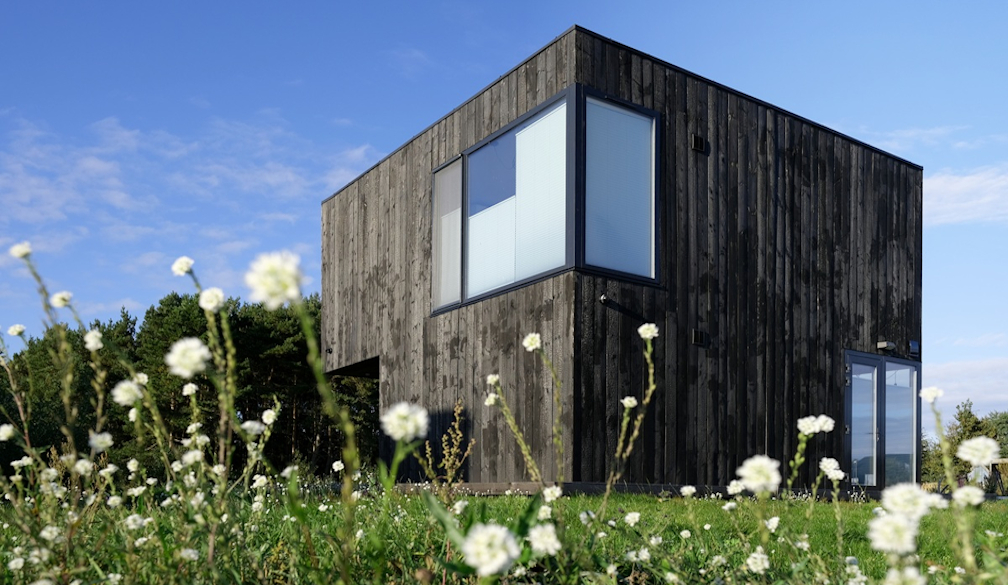Shou Sugi Ban vs Painted Timber Cladding: Which Lasts Longer?

Australia’s unforgiving climate challenges any exterior finish. Cyclonic rains, salty air, and some of the world’s highest UV indices, all undoubtedly punish timber facades, and you can't let that happen, right?
That's when you are faced with the question: whether to choose the conventional paint system or to go with the dramatic, charred character created by the Japanese technique called Shou Sugi Ban.
Both guard the boards, yet each does so in a different way. This article explains how the two finishes work and then weigh up their performance under Australian conditions, covering lifespan, upkeep, ageing, environmental impact and project suitability. Let’s dive in.
What is Shou Sugi Ban Timber Cladding?
Shou Sugi Ban originated in 18th-century coastal Japan, where cedar boards were bundled and lightly torched. Today, purpose-built kilns achieve the same effect with precise control over burn depth and evenness. The heat removes nutrient-rich hemicellulose, leaving behind a thin, graphite-like carbon layer that repels moisture, insects and ultraviolet light.
Many local mills now char durable hardwoods such as spotted gum or ironbark, and some profiles carry BAL-29 (Bushfire Attack Level) compliance, with higher ratings under assessment. Once installed, the char gradually wears before fresh wood is exposed, giving service life estimates of 80-150 years when detailing and occasional oiling are sound. This definitely makes shou sugi ban timber cladding a smart choice.
What is Painted Timber Cladding?
Painted cladding relies on a primer plus two/three coats of acrylic or alkyl resin loaded with pigments. The film seals the grain until the binder loses flexibility; then chalking, cracking and peeling expose bare timber.
In temperate Aussie suburbs, a quality exterior acrylic might reach its first major repaint after seven to ten years. Along surf-spray belts or in regions with extreme UV, repaint intervals shrink to as little as three to five years, and each cycle involves washing, scraping, sanding and spot-priming before a fresh topcoat can go on.
Shou Sugi Ban or Painted Timber Cladding - Which Way to Go?
Lifespan and Weather Resistance
A well-charred board lasts as long as the structure. Historic examples in Japan still perform after eight or nine decades, and accelerated-weathering trials confirm structural integrity for well over a century. The carbon layer acts as a sacrificial skin: as it powders away, sound char lies beneath.
Painted boards, by contrast, survive only as long as their coating remains intact. Once micro-cracks let moisture under the film the timber swells, hastening failure. On exposed facades this tipping point can arrive within five years.
Maintenance Demands
Shou Sugi Ban
- Light wash with a soft brush when dust or pollen builds.
- An optional wipe of exterior oil every three to five years (a little earlier in tropical zones) restores the depth of colour and binds loose soot.
- No sanding, stripping or priming needed.
Painted timber
- Annual wash-down to remove salt and mould.
- Spot-prime cracks as soon as they appear; full scrape, sand and repaint roughly every decade, sooner on harsh sites.
- Labour dominates cost because preparation often exceeds half the total hours.
How the Look Ages Over Time
Shou sugi ban timber cladding starts out deep night-black, then slowly mellows toward charcoal and, eventually, warm silver. Designers often embrace this wabi-sabi patina; if you prefer a consistent ebony tone, a quick coat of pigmented exterior oil returns the richness without masking the texture.
Paint offers any colour under the sun on day one, perfect for heritage schemes or corporate palettes. Yet that uniformity depends on film integrity. As UV breaks the binder, pigments chalk and touch-ups rarely blend, so entire elevations are usually recoated to keep the look even.
Environmental Footprint
Charring uses heat alone - no solvents, fungicides or heavy-metal preservatives. Because the char layer erodes slowly, recoats are infrequent, lowering embodied carbon and leaving nothing to peel into landfill. Modern paint formulations have reduced VOCs, yet every repaint consumes fresh resin, pigments, packaging and scaffold time, while the old film typically heads to waste.
Consider What's the Ideal Project Fit
Charred timber excels where long service life and low intervention are priorities like coastal pavilions, rural retreats and multi-storey facades that are hard to access.
Local suppliers such as Mortlock Timber feature pre-oiled, tongue-and-groove Shou Sugi Ban boards that slot neatly into conventional corner trims, streamlining installation and simplifying future oiling. Painted cladding remains a cost-effective option when the budget is tight or a bespoke colour scheme is critical, provided you accept the ongoing maintenance cycle. It also suits sheltered elevations where film breakdown slows and scaffold access is straightforward.
Still Not Sure What Works for Your Project? Consult with a Professional Near You!
Each finish has its place, but their life-cycle profiles differ sharply. Shou sugi ban timber cladding delivers extraordinary durability, minimal upkeep and a patina that rewards time; painted systems offer colour freedom at a lower upfront cost but lock you into regular recoats.
Now, if these distinctions still feel blurred, or your project combines bushfire rating, coastal exposure and a bold palette, it's always wise to speak with a timber-cladding professional. An experienced designer or supplier can assess orientation, species, fixings and coatings to ensure your facade looks good and performs for decades to come.
Also Read: What is Shou Sugi Ban? Exploring the Ancient Art of Charred Timber Cladding

















